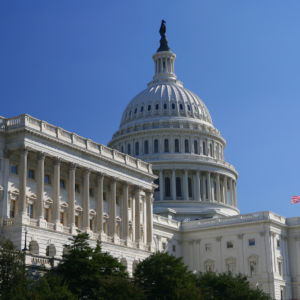Growing up in northern Illinois, my visits to downtown Chicago were highlighted by storefront windows filled with Fannie May candies for Christmas, Easter and, of course, Valentine’s Day.
Little did we know that those candies represented a bittersweet romance between the U.S. sugar industry and the people who were supposed to represent us in Washington.
This romance starts out with a seductive plea for help from domestic producers: Subsidies from foreign governments, cheap overseas labor, and unfair competition are just too much to compete against. Just a little help for a short while, so they say, can get them over the hump. Congress and the White House deliver feel-good deals full of government handouts, claiming to save American jobs. But unfortunately the story doesn’t end there.
Over time, domestic producers get rich off the handouts. The industry becomes dependent on government favors. Lawmakers get addicted to the rush of excess profits from their protectionist policies. Our elected officials are held captive by the money and influence of those they tried to help.
It’s a bad romance, and we all end up paying for it.
Just type “Fanjul brothers” into your search engine, and multiple photographs appear with the sugar barons and presidential hopefuls from both parties, members of Congress and lobbyists. The Department of Agriculture states, “The U.S. sugar program uses price supports, domestic marketing allotments, and tariff-rate quotas to influence the amount of sugar available to the U.S. market. The program supports U.S. sugar prices above comparable levels in the world market.”
The point, more or less, is to make American sugar more expensive and profitable — but that only sounds good when you’re not buying any. Congress enacted the first sugar tariff way back in 1789. Since then, it’s manipulated supply, prices and imports. Rather than affecting the budget, it is, as lecturers Karl Muth and Katheryn Develvis note, “a tax Americans pay weekly at the grocer rather than annually in April.”
American ingenuity outmaneuvers some obstacles. Oreo cookie manufacturer Mondelez moved some operations south of the border to Mexico without skipping a beat. Candy companies Fannie May and Brach’s moved the bulk of manufacturing to Mexico. Kraft relocated a 600-worker Life Savers factory to Canada to gain access to sugar at globally competitive prices.
Over time, food manufacturers turned to high fructose corn syrup and other substitute sweeteners, widening the political base to broader agriculture interests.
Thousands of workers in U.S. confectionery manufacturing plants lost their jobs, while U.S. sugar conglomerates thrived. The Department of Commerce found that for every sugar job saved by the U.S. sugar program, nearly three confectionery manufacturing jobs were lost.
Meanwhile, the government is left to manage supply albeit clumsily, as witnessed last week when the Office of the United States Trade Representative announced easing sugar quotas to make up for a domestic production shortfall.
Another infamous bromance was between Dick Cheney and big steel. During the 2000 presidential election season, Cheney promised West Virginia steel workers that his boss (candidate George W. Bush) would not forget them. West Virginia turned out for Bush, the first time a Republican carried the state since Ronald Reagan.
In 2002, the Bush administration lived up to its promise with tariffs up to 30 percent on a variety of steel products. These ended up costing more jobs in manufacturing sectors that consume steel than existed in the actual steel industry.
The hot-and-heavy relationship reignited with the Trump administration. In 2018, President Trump announced 25 percent tariffs on steel imports and 10 percent on aluminum imports on live television with the steel executives at his side. To this day, the White House, Senate and House all keep their doors open for the U.S. steel industry — even as the industry continues to shrink — with share prices and employment numbers at a low ebb.
The longer government favors stay in place, the harder it is to break up. Sugar and steel are two examples of the same love story: A small group becomes increasingly reliant on special protections, gets wealthy as a result, and then lobbies Congress for continued affection. It is a mutually beneficial relationship.
But don’t be fooled. It’s still a bad romance.

